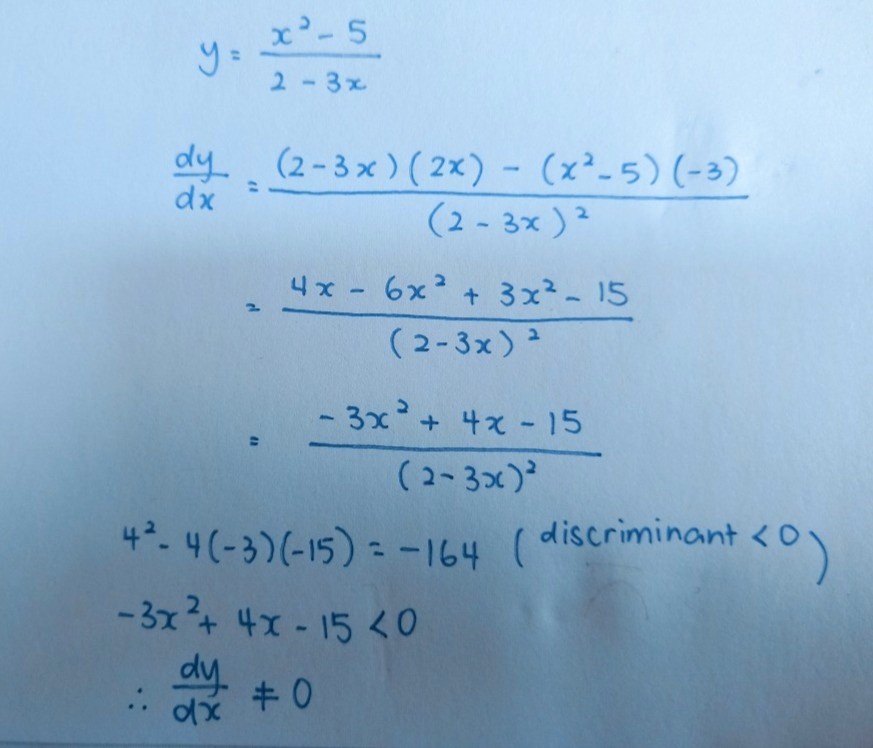Ask Singapore Homework?
Upload a photo of a Singapore homework and someone will email you the solution for free.

Question
secondary 4 | A Maths
One Answer Below
Anyone can contribute an answer, even non-tutors.

Help to solve
dy/dx = (-3x² + 4x - 15) / (2 - 3x)²
(Use your usual quotient rule)
Now, completing the square,
-3x² + 4x - 15
=-3(x² - 4/3 x + ( (4/3)/2 )² ) -15 + 3( (4/3)/2 )²
= -3(x² - ⅔ x + (⅔)²) - 15 + 3(⅔)²
= -3(x - ⅔)² - 15 + 3(4/9)
= -3(x - ⅔)² - 13⅔
Since x ≠ ⅔,
x - ⅔ ≠ 0
(x - ⅔)² > 0 for all real x
(The square of any real non-zero term is aways positive)
Then -3(x - ⅔)² < 0
-3(x - ⅔)² - 13⅔ < -13⅔ < 0
So -3x² + 4x - 15 < 0 for all real x
Which means (-3x² + 4x - 15) / (2 - 3x)² ≠ 0 for all real x and thus dy/dx
(Note : the denominator is non-zero. We cannot have a denominator being 0 as it would make the expression undefined
x ≠ ⅔ so 2 - 3x ≠ 0 and thus (2 - 3x) ≠0)
Since dy/dx ≠ 0 for all real x, there are no stationary points since stationary points are where dy/dx = 0
For -3x² + 4x - 15
Discriminant (b² - 4ac)
= 4² - 4(-3)(-15)
= 16 - 180
= -164
Since discriminant < 0 , there are no real roots for the equation -3x² + 4x - 15 = 0
This means -3x² + 4x - 15 ≠ 0 for all real x
See 1 Answer





